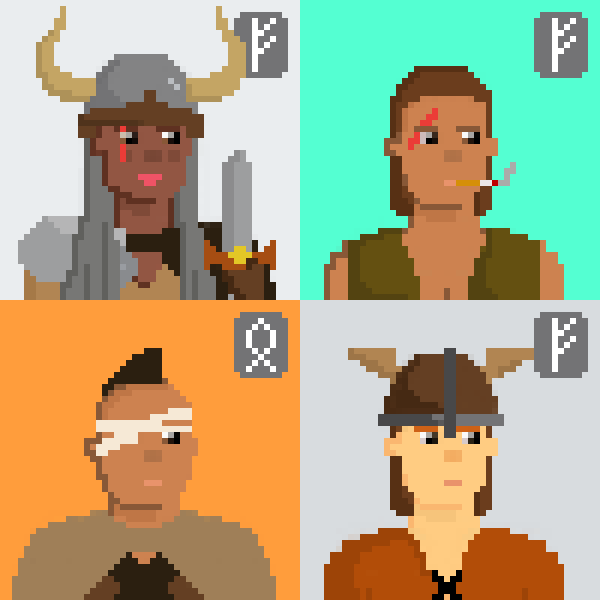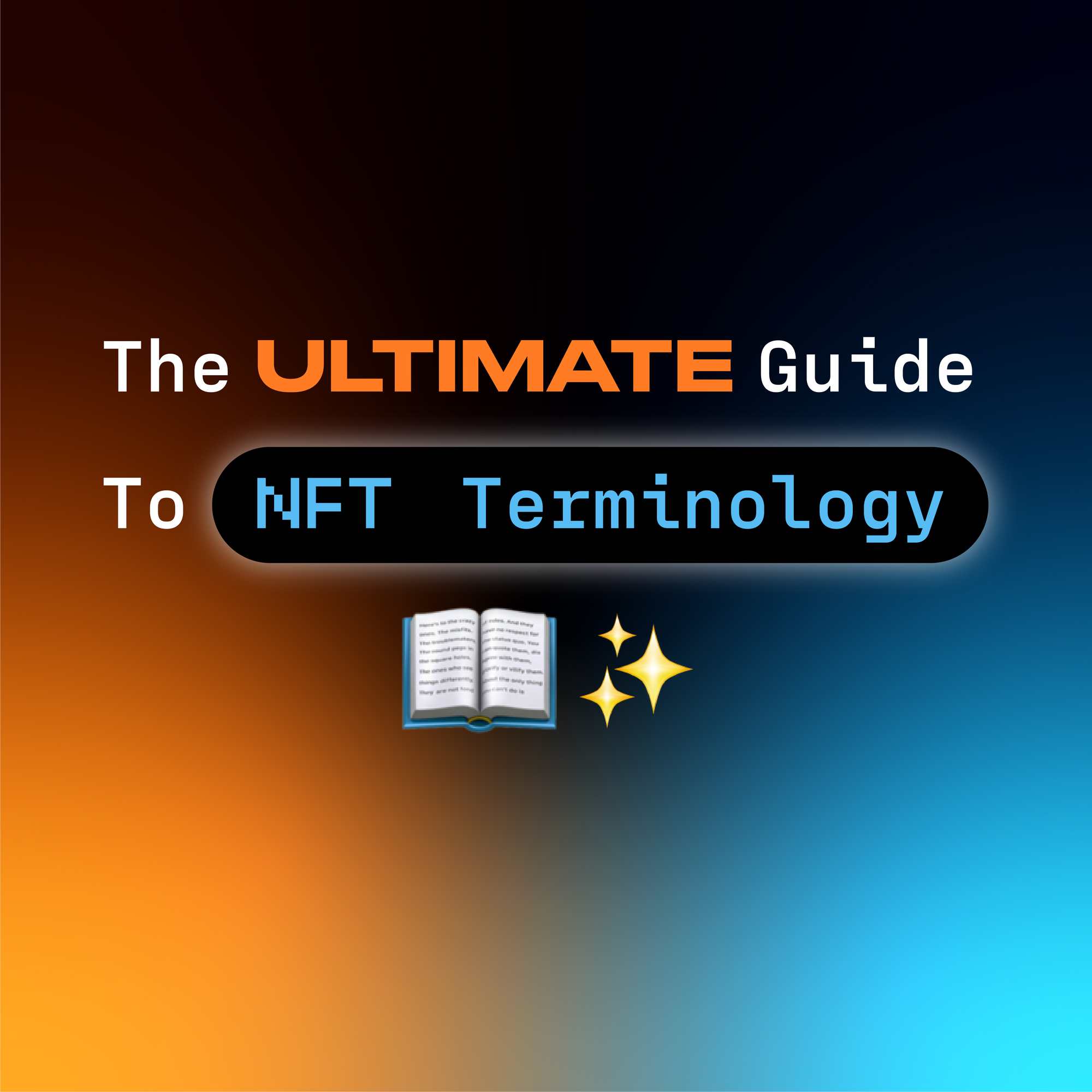The Ultimate Guide to NFT Terminology
By Terrain.art | Nov 8 2021 · 5 min read
From sweeping the floor to starting a gas war in the crypto community, from buying a bored ape to airdropping, here’s a list of terms to making it big in the NFT marketplace.
With so many slang words floating around in the NFT marketplace, it’s often hard to keep up with all of them. New words are invented and thrown around every day, giving us a major fear of missing out. Thanks to character restrictions on Twitter and other social media sites, crypto enthusiasts have invented their own vocabulary, which is yet to find a place in the pages of a dictionary. We have rounded up some of the most used NFT terms that you’ll require to enter the frat house of cool crypto kids:
NFT: First things first. An NFT or a non-fungible token is a digital token that gives a certificate of authenticity to anything that you buy on the net. It may be a tweet, a piece of art, or even memorabilia of your favourite sports star. Let the other kids right click and save copies of the original as much as they want to. You own the holy grail of digital transactions: an NFT that gives you the superpower to brag about your purchase in the virtual space. You can also trade your NFT in exchange for cryptocurrencies.


The image shows Four out of 10000 unique VeKings. VeKings are a collection of 9,999 unique non-fungible tokens (NFT) stored on VeChains, a digital ledger (blockchain)
Cryptocurrency: Unlike physical currency, you won’t be able to see or hold cryptocurrency or digital currency, but you will be able to request exchange into the physical currency of your choice on an NFT platform. Since most of the cryptocurrencies like Bitcoin, Ethereum, Dogecoin, etc. are worth thousands of dollars, owning a cryptocurrency is akin to owning shares whose value may still skyrocket. Cryptocurrencies are traded through an open distributed ledger system using blockchain technology and are safe. Such is the popularity of cryptos that central banks across the world are now thinking of their own versions of digital currencies. Beware, though, that cryptocurrencies can be quite volatile.
Crypto art/NFT art: Art registered on the blockchain is called crypto art. It can either be physical work exclusively digital. In both cases, an NFT attached to the artwork gives it the authenticity of ownership that cannot be tampered with. There are exclusive online NFT platforms, like Terrain. art, that offer NFT-backed artworks. With American artist Beeple’s artwork selling for a whopping USD 69 million in March 2021, auction houses and galleries across the world are launching their own NFT platforms.
GMI/WGMI: Originally Twitter slang, these are now popular with crypto kids. GMI or "gonna make it" and WGMI or "we all gonna make it" refer to a happy state after a successful crypto transaction has been conducted. In a similar vein, NGMI or "not gonna make it" refers to a personal decision related to a bad purchase or a sell-off. Some examples include: “MOMA just bought a crypto punk. WGMI.” Or “Sold a Fidenza crypto for just 3ETH. NGMI!”
Gas fees/gas war: A gas fee has nothing to do with fuel price that are currently skyrocketing globally. It refers to the fee that is required to conduct an Ethereum transaction. Since each transaction requires computational resources to execute, the platform charges a fee for a transaction. Much like the real thing, the gas on Ethereum is based on demand and supply. With the popularity of the platform going through the roof, gas fees have been higher than ever before, leading to what is called gas wars, in which users pay extra fees to miners to prioritize their transactions.
Generative art: Art need not always come from the vision of an artist. Sometimes it can be randomly generated by a machine or an algorithm. Variously called coding art or interactive art, this form of digital art has been extremely popular with artists who are using emerging technologies like AI and robotics to generate art. Catch the works of some of the emerging artists who are using generative art to alter the landscape of Indian art here.
Smart contract/verified contract: Gone are the days when executing a contract required the presence of witnesses and a host of other protocols. In the crypto world, a smart contract enables the execution of an agreement if all the preconditions are met. This happens instantaneously and without the intervention or involvement of intermediaries. A verified contract is one where a third-party certification company provides validation to a smart contract.
Bored Ape Yacht Club: This is the internet’s hottest NFT club right now and everybody wants a ticket to the party. Founded by Yuga Labs, it is a collection of over 10,000 unique NFTs of cartoon apes. You can buy an ape on OpenSea (one of the largest NFT marketplaces) that gives you exclusive privileges of the club. But be ready to sell an arm for your ape as the cheapest one comes with a price tag of 49 ether or USD 208,000.
Honourable Mention: Many other terms couldn’t make the cut to the list of NFT terminology. Here’s a quick look: Beeple (the Warhol of the crypto market whose digital series, Everydays, sold for an astronomical sum of USD 69 million, thereby igniting NFT mania), Sweep the Floor (a tactic used to buy all the NFTs at the lowest price available), Ape In (aggressive buying or buying big), Floor price (minimum ask price for an NFT), Airdrop (a one-time special dividend), and Burn (destroying two NFTs to create a new one).

